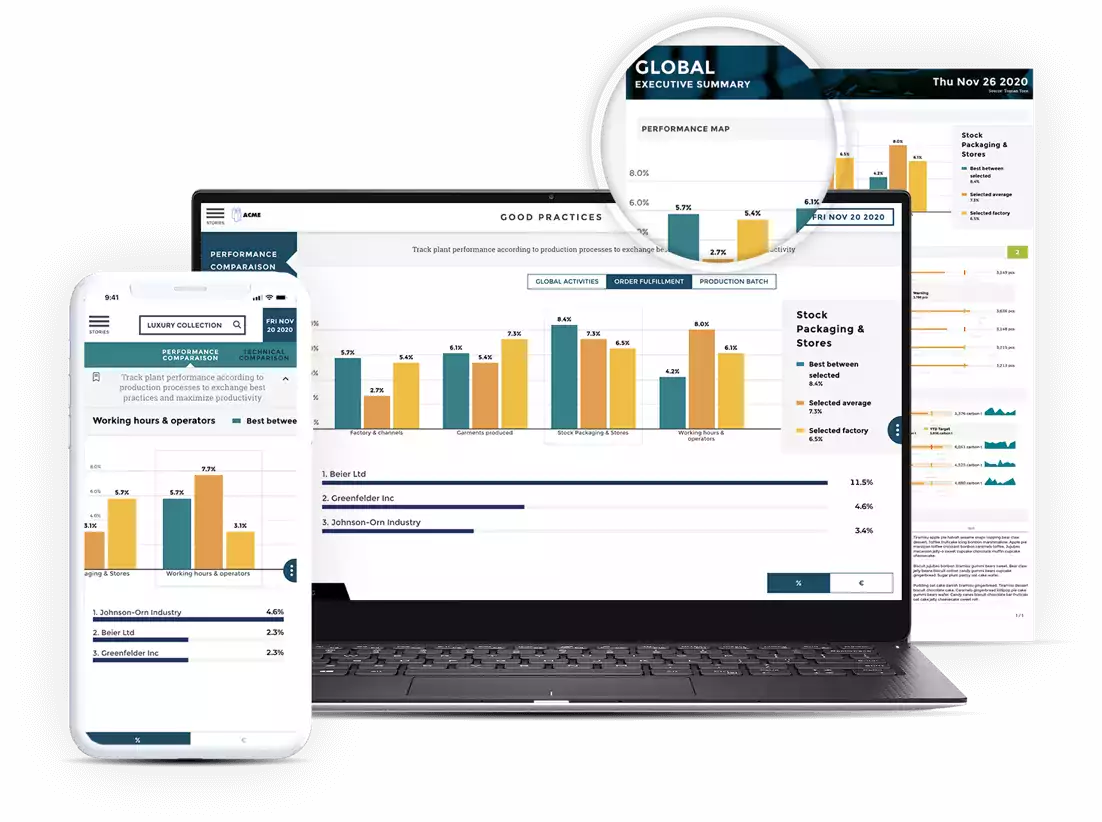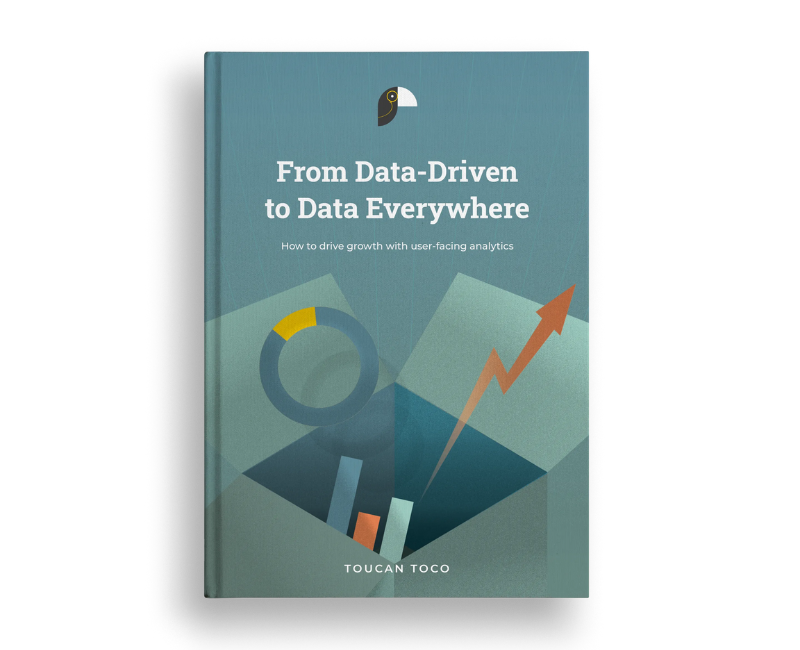Bias in data reporting can lead to costly errors, reputation damage, and in some industries, even physical harm. Research has repeatedly shown over the last few years that facial recognition technology used by law enforcement appears to be biased against women of color. In one study, this technology falsely matched several members of Congress with mugshot images. In healthcare, biased data can lead to misdiagnoses and inaccurate treatment plans. Bias in the training systems of autonomous vehicles can make it more difficult for their systems to identify and avoid pedestrians of different ethnicities or ages.
Ultimately, bias can erode customer trust, hinder your organization’s ability to grow, and reinforce harmful stereotypes that are harmful to society as a whole. Fortunately, by understanding the sources of bias and potential pitfalls in data reporting, you can develop strategies to ensure the integrity and reliability of your data analysis. This guide will provide actionable tips and best practices to help you avoid bias and pitfalls in your data reporting processes.
Types Of Bias In Data Reporting
No organization wants bias in their data reporting. The problem is that inaccuracies and slight variations that build up over time are rarely obvious. Creeping errors can lead to much greater problems down the line. The first step is defining what bias is in the context of data reporting.
Simply put, bias refers to the presence of a systematic error or deviation in how data is collected that influences the results in a particular direction. This can occur for various reasons, including poor collection methods, flawed analysis processes, or preconceived notions on the part of an analyst. The identifying element of bias is that its errors will always favor a particular direction. This makes it an even more serious threat to data accuracy than other errors that may be random in their effect. Bias can completely skew results, strongly suggesting conclusions that may be totally inaccurate.
Understanding Common Biases In Data Reporting
Data bias in reporting can arise from various sources and lead to distorted or inaccurate representations of information. Here are some of the most common types of data bias in data reporting:
- Selection bias:
This type of bias occurs when certain groups or data points are systematically excluded from the analysis, leading to an unrepresentative sample. If a survey only collects responses from a specific age group, the results may not accurately reflect the entire population’s views. - Confirmation bias:
Researchers, analysts, or even business leaders sometimes go into a study with pre-existing beliefs and objectives. If these beliefs are allowed into the data collection process, this can lead to selective reporting of only the information that supports the hypothesis. Contradictory data gets downplayed or entirely ignored, and the overall picture can be distorted as a result. For example, consider a soda company whose analysts believe their product needs to be sweeter in order to outpace their competitors. These analysts then conduct a study and only focus on the data supporting their hypothesis. The company then loses millions of dollars when the launch of its sweeter soda product fails to capture a significant market share. This is just one example of how biased data can harm an organization. - Sampling bias:
Sampling bias occurs when the data collected is not representative of the entire population due to the chosen sample method. For example, if an online survey is only promoted on a specific platform, it might not capture the opinions of the rest of the population that does not use that platform. - Response bias:
This is another important bias to be aware of. This occurs when respondents' answers are not accurate due to factors like social desirability, leading questions, or misinterpretation. People might provide answers they think the surveyor wants to hear rather than true opinions.
The Impact of Bias On Data Analytics
Bias can blind companies to market opportunities that arise from diverse customer needs and preferences. It can stifle innovation, decrease the quality of your organization’s decision-making, and leave your business at a competitive disadvantage. However, the impact of bias can be even more serious.
In healthcare, biased data collection processes can lead to misdiagnoses or incorrect treatment plans. If a sample of patients is not representative of the population, the data collected may not accurately reflect the health status of the entire population. AI systems trained on medical research biased towards male health may consistently fail to identify and diagnose health issues in women. Financial reports that are skewed due to biased data collection can lead investors to make inaccurate decisions with negative consequences. Tech companies building software that uses biased data collection processes can result in discriminatory outcomes. This is exemplified by the facial recognition research we mentioned earlier. Algorithms built using biased data may unfairly target or exclude certain groups of people.
Identifying and addressing bias early in reporting is crucial to ensure accurate and valid data. This can be achieved by using diverse and representative samples, employing rigorous measurement methods, and avoiding preconceived notions or prejudices. By minimizing or eliminating bias, decision-making processes, and outcomes can be more accurate and fair, leading to better results in healthcare, finance, tech, and other fields.
Ensure Data Quality With Robust Collection Methods
The key to eliminating data collection bias is ensuring that your methods emphasize data quality. Regardless of researchers' or respondents' personal feelings or beliefs, robust processes can ensure that bias is kept to a minimum and accurate data is collected and reported.
To reduce bias during data gathering, several strategies can be employed.
- Random sampling.
Select the subset of individuals or data points from the population at random. This ensures that every member of the population has an equal chance of being included in the sample. - Stratified sampling.
Divide the population into subgroups (strata) based on relevant characteristics and then select samples from each stratum. This ensures that each subgroup receives adequate representation, improving the overall quality of your data. - Double-Blind studies:
In this data collection method, both the researchers and the participants are unaware of which group of individuals is the control group and which is the experimental group. This can mitigate observer bias and prevents results from being influenced by the expectations of participants or researchers. - Diverse data collection:
Always seek to collect data from as wide a range of sources, locations, and demographic groups as possible. This is another method to ensure that your sample and data are truly representative and that your conclusions can be trusted. - Analytics tools.
Using the right kind of data analytics tools can be critical in achieving good data quality management and eliminating bias during data collection. By automating the data collection process, the risk of human error is reduced, and collection can occur on a more consistent basis.
Representative Samples Verify Data Integrity
A representative sample is a subset of a larger population that accurately reflects the characteristics of that population. In unbiased reporting, a representative sample is crucial as it helps ensure that the data collected reflects the true population and not skewed towards any particular group.
To create a representative sample for different data sets, researchers should use random sampling techniques and ensure that all population members have an equal chance of being selected.
Failing to use a representative sample can have serious consequences, such as overgeneralization or underrepresenting certain groups. For example, if a survey on political issues only includes participants from one political party, the results may not accurately reflect the opinions of the wider population.
Establish Transparency And Accountability
Transparency and accountability are crucial elements of avoiding bias. By setting up transparent processes, researchers, and participants alike can know exactly where the data will be coming from, how it will be collected, and how it will be analyzed. When outsiders come to view the data, transparency will ensure they can verify that the processes used are free of bias. Simply knowing that their work will be exposed to the eye of the public can discourage researchers from knowingly or unknowingly manipulating data based on preconceived notions.
This ties into accountability, which also plays a crucial role in mitigating biased reporting practices. By holding reporters and data analysts accountable for their work, we can ensure that they are objective and transparent in their reporting.
Validation and cross-checking are also essential components of accurate data reporting. Data can be validated through multiple sources and methods, such as peer review, fact-checking, and statistical analysis.
By using these techniques, we can ensure that the data is accurate, reliable, and trustworthy.
Identify And Eliminate Bias
It is important to encourage diversity in data analysis teams in order to identify and eliminate bias. By having individuals from diverse backgrounds and perspectives, they can bring unique insights and experiences to the table. This can help identify and address biases, leading to more accurate and reliable data reporting.
The negative impact of bias on decision-making is abundantly clear. However, the key takeaway here is that the pitfalls created by bias can be avoided by identifying its most common forms and implementing strong collection methods such as random sampling and double-blind studies.





